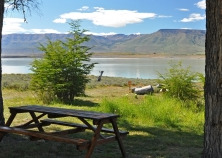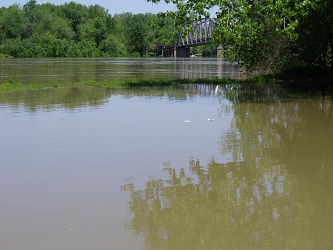Top 7 Tips For Regional-Scale Large Park Cleanups
Last Updated: August 13, 2024
1. In advance of your first cleanup, you may need to organize several opportunities for residents and other stakeholders to walk through the park with the owner of the park, presumably a government. This would be especially fruitful if the park or sections of it are rarely visited due to current conditions. Take plenty of video. Collect the comments about current conditions and ideas for future projects and even re-purposing sections of the park in an organized fashion and post them prominently on a website and on social media. Unless you encounter controversy, don't let this phase run for more than about two months.

2. After there has been considerable public input, including an overweight sampling of
residents who live nearby, residents and the owner need to meet to establish commitments about exactly what resources the park's owner can and will provide. In major cities, the local parks department may say essentially we're doing all we can. If you the concerned residents are leading this initiative, at some point you will need to accept the government's word on that, while quietly going about organizing an ambitious series of volunteer efforts. Volunteer projects both help a municipal government that may be genuinely financially strapped, and also help to shame the local officials into doing more.
This tactic may seem to be strange advice, but we find that over the course of a few years, a parks department generally will do more and more after residents and philanthropists have pitched in to create a pleasing environment for a short while.
3. If you find a somewhat
receptive audience in the city government, ask them to divide large tasks into
smaller ones and set up a timeline that would allow them to expand present
levels of maintenance over the next few years. Residents can offer to
help with a particularly large or daunting task that is suitable for volunteer
engagement. Usually some people who take a particular interest in a problem
park, or one that just is a little under-maintained, will be glad to help.
4. Careful pruning, selective cutting of the understory plants and removal of dead debris may be "all" that is required for large park clean up in areas that appear extremely overgrown. (Understory means just what it sounds like--the plants that are just shorter than major trees but taller than ground cover, shrubbery, or turf grass.) This may or may not be a suitable volunteer project, depending on the scale and difficulty of the work.
5. Identify together community resources that can be brought to bear on the project. Contractors may be able to contribute and personnel on several successive Saturday morning. While you should not expect a landscaping contractor to do your whole project for you, identify a few tasks in which their expertise and equipment would be most helpful. Street departments from a different level of government may be able to help out with personnel or equipment. The Army Corps of Engineers might be looking for a project. Teen groups, and teens looking for an elite scouting designation, can bring remarkable energy.
Take full advantage of the appeal of your clean up to environmental organizations. Some will be glad to help simply because you're picking up refuse and trimming trees appropriately, but if you can create an important environmental benefit, such as a pollinator garden or a wetland re-creation, expect big enthusiasm and a ready source of volunteers.
6. Corporations often are willing to help with both volunteers and financing of a clean up if you can figure out how the resulting revived area might be named for them. For example, you might create XYZ Meadow, XYZ Amphitheater, the XYZ Picnic Pavilion, or even the XYZ skating rink or horseshoe pits.
7. Lastly, be aware of jobs that volunteers shouldn't be asked to do. If you have a major jungle somewhere, don't expect volunteers to fix it. Consult the professionals who clear land for subdivisions and so forth, as they will have the right equipment. Sometimes potentially dangerous conditions must be stabilized by paid contractors before volunteers can be safe and healthy while they pitch in to do the finish work and the follow-up maintenance.
We urge you to either ask your questions about how to approach your own particular large park challenge, or to contribute your stories of what works well for you or even how you have tried and failed in some respect. I do my best to answer questions on this website. See more about how all this works and find the form to submit when you head over to the Cleanups Questions and Stories page.
- Making and Keeping a Good Community >
- Community Improvement Projects > Big Park Cleanups
Join GOOD COMMUNITY PLUS, which provides you monthly with short features or tips about timely topics for neighborhoods, towns and cities, community organizations, and rural or small town environments. Unsubscribe any time. Give it a try.
